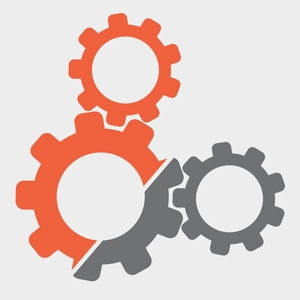Case Tools Lab Model 1

This Quiz is based on the Scrum & Agile basics. You can check your knowledge and understanding about these concepts through this quiz.
The quiz is timed and you have 20 minutes to complete 25 multiple-choice questions. There is no negative marking for any question. So try to attempt all questions.
All the best!
- 1.
Which one of the following is not a Scrum Artifact?
- A.
Product Backlog
- B.
Story
- C.
Sprint Backlog
- D.
Increment of Potentially Shippable Product Functionality
Correct Answer
B. StoryExplanation
The correct answer is "Story" because a story is not a Scrum Artifact. In Scrum, the three main artifacts are the Product Backlog, Sprint Backlog, and the Increment of Potentially Shippable Product Functionality. The Product Backlog contains all the requirements and features prioritized by the product owner. The Sprint Backlog contains the tasks and user stories selected for a specific sprint. The Increment of Potentially Shippable Product Functionality is the sum of all the completed and tested product backlog items. However, a "Story" is not specifically mentioned as a Scrum Artifact.Rate this question:
-
- 2.
Which of the following meeting is not part of Scrum?
- A.
Product review meeting
- B.
Sprint review meeting
- C.
Sprint planning meeting
- D.
Sprint retrospective meeting
Correct Answer
A. Product review meetingExplanation
The product review meeting is not part of Scrum because it is not a formal event in the Scrum framework. Scrum consists of specific meetings, including the sprint review meeting, sprint planning meeting, and sprint retrospective meeting, which are all essential components of the Scrum process. The product review meeting, on the other hand, is not mentioned or included in the Scrum framework.Rate this question:
-
- 3.
Identify the levels of planning in an agile model?1-Iteration Level2-Release Level3-Sprint Level4-Product Level
- A.
1,2,3
- B.
2,3
- C.
4
- D.
4,2,3,1
Correct Answer
D. 4,2,3,1Explanation
The levels of planning in an agile model are as follows: 4-Product Level, 2-Release Level, 3-Sprint Level, and 1-Iteration Level. This means that the planning starts at the iteration level, where specific tasks and goals are identified for a short period of time. Then, the planning moves to the sprint level, where a set of iterations are grouped together to achieve a larger goal. After that, the planning is done at the release level, where multiple sprints are combined to deliver a complete product. Finally, the highest level of planning is done at the product level, where the overall vision and strategy for the product are defined.Rate this question:
-
- 4.
A user story is based on INVEST model.What does it signifies?
- A.
Independent,Negotiable,Valuable,Estimable,Small,Testable
- B.
Individual,Negotaible,Varying,Economic,Small,Testable
- C.
Independent,Negotaible,Varying,Economic,Smart,Testable
- D.
Invetable,Negotaible,Varying,Economic,Small,True
Correct Answer
A. Independent,Negotiable,Valuable,Estimable,Small,TestableExplanation
The correct answer signifies that a user story should be independent, negotiable, valuable, estimable, small, and testable. These characteristics are based on the INVEST model, which is a set of criteria used to evaluate the quality of user stories in agile development. Independent means that the user story can be developed and tested in isolation. Negotiable means that the details of the user story can be discussed and adjusted. Valuable means that the user story provides value to the user or customer. Estimable means that the effort required to complete the user story can be estimated. Small means that the user story is small enough to be completed within a single iteration. Testable means that the user story can be tested to ensure it meets the desired outcome.Rate this question:
-
- 5.
A user story is
- A.
A series of interactions by the user (Actor) with the system and the response of the system.
- B.
A narrative text(s) that describe an interaction of the user with the value of from the system.
- C.
A narrative text(s) that describe an interaction of the user and the system, focusing on the value a user gains from the system.
- D.
A series of interactions by the user (Actor) with the the co-actor of the system.
Correct Answer
C. A narrative text(s) that describe an interaction of the user and the system, focusing on the value a user gains from the system.Explanation
The correct answer is "A narrative text(s) that describe an interaction of the user and the system, focusing on the value a user gains from the system." This answer accurately describes a user story as a narrative that highlights the interaction between the user and the system, emphasizing the value that the user derives from using the system. It captures the essence of a user story, which is to articulate the user's needs, goals, and desired outcomes in a way that can be understood and addressed by the development team.Rate this question:
-
- 6.
Which of the following are 3 phases of Scrum(in sequence)?1-Pre-game2-Pro-game3-Post-game4-Game
- A.
1,2,3
- B.
2,4,3
- C.
1,4,3
- D.
1,4,2
Correct Answer
C. 1,4,3Explanation
The correct answer is 1,4,3. In Scrum, the first phase is the Pre-game phase where the team prepares for the project by defining goals and creating a backlog. The second phase is the Game phase where the team works on the project by completing the tasks from the backlog. The final phase is the Post-game phase where the team reviews the project, learns from the experience, and identifies areas for improvement.Rate this question:
-
- 7.
What are the artifacts of Sprint Planning Meeting?1-Sprint Goal2-Sprint Retrospective3-Sprint Backlog4-Sprint Review Meeting
- A.
1,2,3
- B.
1,3
- C.
1,2,3,4
- D.
2,3,4
Correct Answer
B. 1,3Explanation
The artifacts of a Sprint Planning Meeting are the Sprint Goal and the Sprint Backlog. The Sprint Goal is a short statement that describes what the team aims to achieve during the Sprint. The Sprint Backlog is a list of the tasks and user stories that the team plans to work on during the Sprint. The Sprint Retrospective and Sprint Review Meeting are not artifacts of the Sprint Planning Meeting, as they are separate events that occur at the end of the Sprint.Rate this question:
-
- 8.
What are the main questions answered by each team member in Daily Scrum Meeting?1-What did you do yesterday?2-Are there impediments in your way?3-Are you about to put something in another team's way?4-What will you do today?
- A.
1,2,3
- B.
1,2,3,4
- C.
1,2,4
- D.
2,3,4
Correct Answer
C. 1,2,4Explanation
Each team member in the Daily Scrum Meeting answers the following main questions: What did you do yesterday? Are there any impediments in your way? What will you do today? This allows the team to have a clear understanding of each member's progress, any obstacles they are facing, and their plans for the day. Answer options 1,2,4 correctly include all three questions.Rate this question:
-
- 9.
Agile is applicable mostly to projects with which of the following characteristics?1-Urgent2-Complex3-Moderate4-Unique
- A.
1,2,3
- B.
1,2,4
- C.
2,3,4
- D.
1,3,4
Correct Answer
B. 1,2,4Explanation
Agile is applicable mostly to projects that have urgent timelines, are complex in nature, and require unique solutions. This is because Agile methodology emphasizes quick and iterative development, allowing teams to respond rapidly to changing requirements and deliver value early and frequently. Complex projects often require flexibility and adaptability, which Agile provides through its iterative approach. Additionally, unique projects that require innovative and creative solutions can benefit from Agile's focus on collaboration and continuous improvement.Rate this question:
-
- 10.
What are the 3 Scrum Pillars?1-Adaptation2-Acceptance3-Transparency4-Inspection
- A.
1,2,3
- B.
2,3,4
- C.
1,3,4
- D.
1,2,4
Correct Answer
C. 1,3,4Explanation
The three Scrum Pillars are Adaptation, Transparency, and Inspection. These pillars form the foundation of the Scrum framework and are essential for its successful implementation. Adaptation refers to the continuous improvement and adjustment of the Scrum process based on feedback and changing circumstances. Transparency emphasizes the need for open communication and visibility of work, progress, and challenges. Inspection involves regularly reviewing and evaluating the Scrum artifacts, processes, and progress to identify areas of improvement and ensure adherence to the Scrum framework.Rate this question:
-
- 11.
Scrum Teams are (select the best option):-
- A.
Self-organizing,Cross-functional
- B.
Cross-productive,Self-organizing
- C.
Self-destructive,Self-motivating
- D.
Non-productive,Selfish
Correct Answer
A. Self-organizing,Cross-functionalExplanation
Scrum Teams are described as self-organizing and cross-functional. This means that the team has the autonomy to make decisions and organize their work without external interference. They are also composed of individuals with different skills and expertise, allowing them to handle a wide range of tasks and responsibilities. This combination of self-organization and cross-functionality enables the team to collaborate effectively, adapt to changes, and deliver high-quality products.Rate this question:
-
- 12.
Which is/are the best user story format(s)? (select all that applies)
- A.
As a < user > I want to < goal > so that < acceptance criteria >
- B.
As a < coder > I want to < past performance > so that < future results >
- C.
As a < user > I want to < goal > so that < benefits >
- D.
As a < service provider > I want to < vision > so that < achievable results >
Correct Answer(s)
A. As a < user > I want to < goal > so that < acceptance criteria >
C. As a < user > I want to < goal > so that < benefits >Explanation
The correct answer is "As a < user > I want to < goal > so that < acceptance criteria >,As a < user > I want to < goal > so that < benefits >". These user story formats are considered the best because they clearly define the user, their goal, and the reason for that goal. The acceptance criteria and benefits provide specific details about what the user wants to achieve and why it is important to them. This format helps in understanding the user's needs and ensuring that the end product meets those needs effectively.Rate this question:
-
- 13.
Which statement best describes Scrum?
- A.
A complete methodology that defines how to develop software.
- B.
A cookbook that defines best practice for software development.
- C.
A framework within which complex products in complex environments are developed.
- D.
A defined and predictive process that conforms to the principles of Scientific Management.
Correct Answer
C. A framework within which complex products in complex environments are developed.Explanation
Scrum is not a process or a technique for building products ; rather, it is a framework within which you can employ various processes and techniques.Rate this question:
-
- 14.
Who is on the Scrum Team?
- A.
The Scrum Master
- B.
The Development Team
- C.
Project Manager
- D.
The Product Owner
- E.
None of the above
Correct Answer(s)
A. The Scrum Master
B. The Development Team
D. The Product OwnerExplanation
The Scrum Team consists of the Scrum Master (manages the process), the Product Owner (decides what to do) and the Development Team (does the work).Rate this question:
-
- 15.
When does the next Sprint begin?
- A.
Every Monday.
- B.
Immediately following the next Sprint Planning.
- C.
When the Product Owner is ready.
- D.
Immediately after the conclusion of the previous Sprint.
Correct Answer
D. Immediately after the conclusion of the previous Sprint.Explanation
A new Sprint starts immediately after the conclusion of the previous Sprint.Rate this question:
-
- 16.
Who should know the most about the progress toward a business objective or a release, and be able to explain the alternatives most clearly?
- A.
The Product Owner
- B.
The Development Team
- C.
The Scrum Master
- D.
The Project Manager
Correct Answer
A. The Product OwnerExplanation
The Product Owner is the sole person responsible for managing the Product Backlog, which includes that the Product Backlog is visible, transparent, and clear to all, and shows what the Scrum Team will work on next.Rate this question:
-
- 17.
When many Development Teams are working on a single product, what best describes the definition of "done?"
- A.
Each Development Team uses its own but must make their definition clear to all other Teams so the differences are known.
- B.
It depends.
- C.
Each Development Team defines and uses its own. The differences are discussed and reconciled during a hardening Sprint.
- D.
All Development Teams must have a definition of "done" that makes their combined work potentially releasable.
Correct Answer
D. All Development Teams must have a definition of "done" that makes their combined work potentially releasable.Explanation
When multiple Development Teams are working on a single product, it is important that all of them have a common understanding of what "done" means. This means that each Development Team must have their own definition of "done" that aligns with the overall goal of making their combined work potentially releasable. This ensures that the work done by each team can be integrated and released as a cohesive product. While each team may have their own specific criteria for "done," it is crucial that these differences are discussed and reconciled during a hardening Sprint to ensure a unified definition of "done" across all teams.Rate this question:
-
- 18.
Which statement best describes the Sprint Review?
- A.
It is a review of the team's activities during the Sprint.
- B.
It is used to congratulate the Development Team if it did what it committed to doing, or to punish the Development Team if it failed to meet its commitments.
- C.
It is a demo at the end of the Sprint for everyone in the organization to provide feedback on the work done.
- D.
It is when the Scrum Team and stakeholders inspect the outcome of the Sprint and figure out what to do in the upcoming Sprint.
Correct Answer
D. It is when the Scrum Team and stakeholders inspect the outcome of the Sprint and figure out what to do in the upcoming Sprint.Explanation
Every event in Scrum, besides the Sprint which is a container for the other events, is an opportunity to Inspect AND Adapt.Rate this question:
-
- 19.
Who has the final say on the order of the Product Backlog?
- A.
The Product Owner
- B.
The CEO
- C.
The Scrum Master
- D.
The Development Team
- E.
The Stakeholders
Correct Answer
A. The Product OwnerExplanation
The Product Owner has the final say on the order of the Product Backlog. This is because the Product Owner is responsible for maximizing the value of the product and ensuring that the most valuable items are at the top of the backlog. They work closely with stakeholders and the development team to prioritize and refine the backlog, but ultimately it is the Product Owner's decision on the order of the items.Rate this question:
-
- 20.
Upon what type of process control is Scrum based?
- A.
Hybrid
- B.
Defined
- C.
Empirical
- D.
Complex
Correct Answer
C. EmpiricalExplanation
Scrum is based on empirical process control. Empirical process control is a control method that uses frequent inspection and adaptation to make decisions based on observed data and experience rather than relying on predefined plans. Scrum follows an iterative and incremental approach, where the team regularly inspects the progress and adapts their plans accordingly. This allows for flexibility and continuous improvement throughout the project.Rate this question:
-
- 21.
The maximum length of the Sprint Review (its timebox) is:
- A.
2 hours.
- B.
As long as needed.
- C.
4 hours and longer as needed.
- D.
1 day.
- E.
4 hours for a monthly Sprint. For shorter Sprints it is usually shorter.
Correct Answer
E. 4 hours for a monthly Sprint. For shorter Sprints it is usually shorter.Explanation
The maximum length of the Sprint Review is typically 4 hours for a monthly Sprint. However, for shorter Sprints, the timebox for the Sprint Review is usually shorter as well. This means that the length of the Sprint Review can vary depending on the length of the Sprint itself.Rate this question:
-
- 22.
Who is responsible for registering the work estimates during a Sprint?
- A.
The most junior member of the Team.
- B.
The Product Owner.
- C.
The Development Team.
- D.
The Scrum Master.
Correct Answer
C. The Development Team.Explanation
The Development Team is responsible for registering the work estimates during a Sprint. This is because the Development Team is responsible for planning and executing the work during a Sprint, including estimating the effort required for each task. The Development Team collaboratively estimates the work during Sprint Planning to ensure that they have a clear understanding of the scope and effort involved in each task. This allows them to effectively plan and manage their work throughout the Sprint.Rate this question:
-
- 23.
During the Daily Scrum, the Scrum Master's role is to:
- A.
Make sure that all 3 questions have been answered.
- B.
Lead the discussions of the Development Team.
- C.
All of the above.
- D.
Teach the Development Team to keep the Daily Scrum within the 15 minute timebox.
- E.
Manage the meeting in a way that each team member has a chance to speak.
Correct Answer
D. Teach the Development Team to keep the Daily Scrum within the 15 minute timebox.Explanation
Per the Scrum Guide, the Scrum Master ensures that the Development Team has the meeting and teaches the Development Team to keep to a 15 minute time box. The Development Team is responsible for conducting the Daily Scrum.Rate this question:
-
- 24.
What is the primary way a Scrum Master keeps a Development Team working at its highest level of productivity?
- A.
By preventing changes to the backlogs once the Sprint begins.
- B.
By keeping high value features high in the Product Backlog.
- C.
By facilitating Development Team decisions and removing impediments.
- D.
By ensuring the meetings start and end at the proper time.
Correct Answer
C. By facilitating Development Team decisions and removing impediments.Explanation
The primary way a Scrum Master keeps a Development Team working at its highest level of productivity is by facilitating Development Team decisions and removing impediments. This involves ensuring that the team has the autonomy to make decisions and providing support in removing any obstacles or roadblocks that may hinder their progress. By doing so, the Scrum Master enables the team to work efficiently and effectively, leading to increased productivity.Rate this question:
-
Quiz Review Timeline +
Our quizzes are rigorously reviewed, monitored and continuously updated by our expert board to maintain accuracy, relevance, and timeliness.
-
Current Version
-
Mar 19, 2023Quiz Edited by
ProProfs Editorial Team -
Feb 22, 2018Quiz Created by
Winstonpauld






